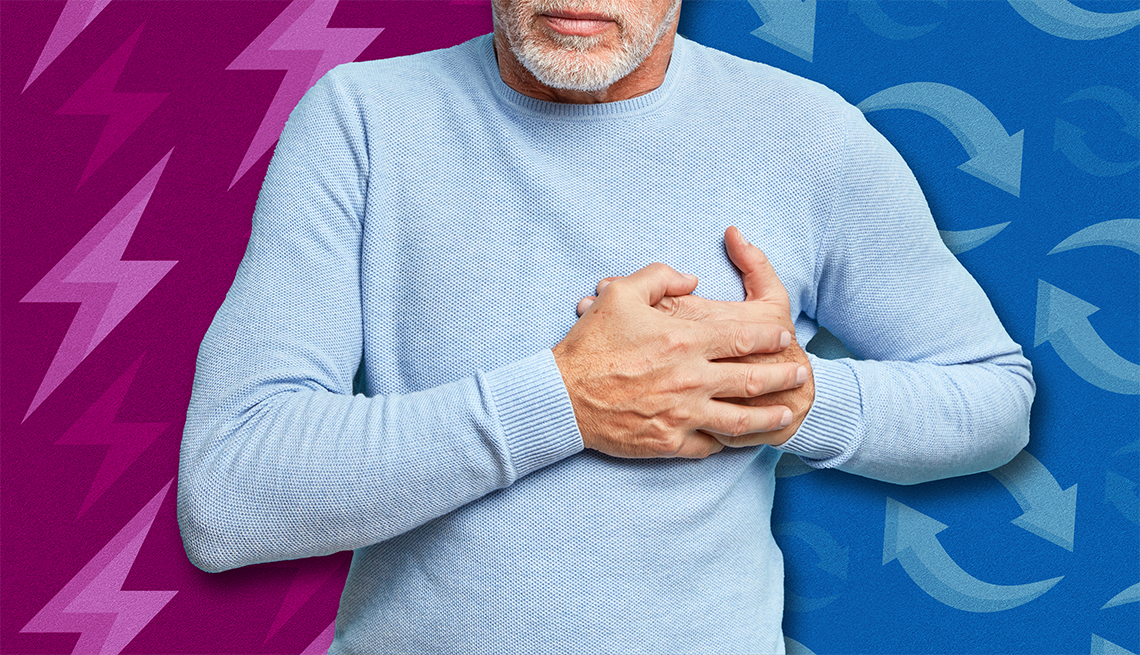Staying Fit


When Nicole Smith went to visit her 83-year-old father in the hospital last fall, she never imaged she’d become a patient, too. But that’s exactly what happened to the Fort Lauderdale, Florida, resident after she suddenly collapsed in the cafeteria.
“I woke up and I was in the intensive care unit,” says Smith, 53. The diagnosis: sudden cardiac arrest. With no known heart risks or warning signs, she never saw it coming. “This was the furthest thing from my mind that something like this could happen,” she said.


AARP Membership— $12 for your first year when you sign up for Automatic Renewal
Get instant access to members-only products and hundreds of discounts, a free second membership, and a subscription to AARP the Magazine.
While often confused with a heart attack, cardiac arrest is a completely different health emergency — and it’s one that requires prompt recognition and response.
Here’s what you need to know about each of the two conditions and what to do if you suspect someone is experiencing a serious heart event.
Cardiac arrest
What is cardiac arrest? Cardiac arrest is when the heart suddenly stop pumping, depriving the body and brain of oxygen-rich blood.
The impact is immediate: Breathing stops and the person loses consciousness. “If somebody has a cardiac arrest, it’s not subtle. They are on the ground, and they are not responding to you,” says Gregory Katz, M.D., a cardiologist at NYU Langone and an assistant professor in the Department of Medicine at NYU Grossman School of Medicine.
What causes cardiac arrest? Cardiac arrest is caused by irregular heart rhythms, called arrhythmias, that cause the heart to stop working properly, says the National Heart, Lung and Blood Institute (NHLBI).
Many health conditions that are common among older adults can disrupt the heart’s rhythm and increase the risk of cardiac arrest, including coronary heart disease, a prior heart attack, atrial fibrillation, heart inflammation, cardiomyopathy (an enlarged heart), and leaky or narrow heart valves. Still, the NHLBI says about half of cardiac arrests happen to people who did not know they had a heart problem, as was the case with Smith.

































































More From AARP
Heart Health: News, Tips and Healthy Habits
Information and tips on exercise, diet, and other lifestyle habits to keep your heart healthy
8 Major Health Risks for People 50 and Older
A look at the top killers — and how to dodge themMedical Advancements in Cardiovascular Disease
New research is changing the future for older Americans' heart health
Rare Heart Condition Offers Few Clues
A common symptom was the only warning sign for a fast and fatal disease
Recommended for You